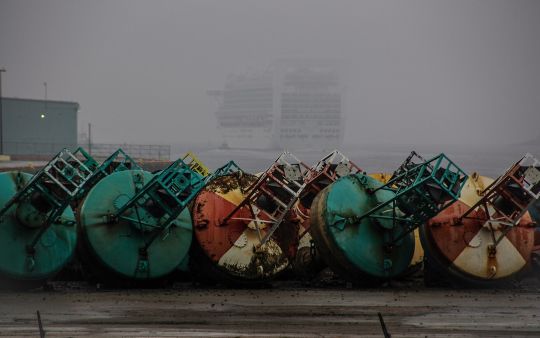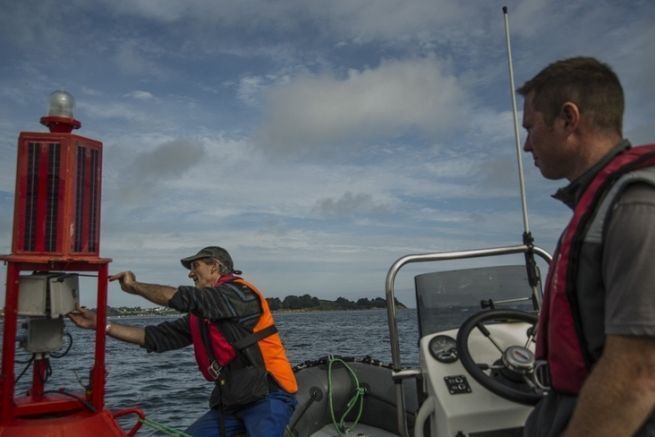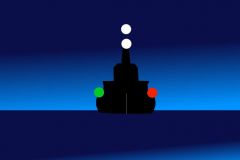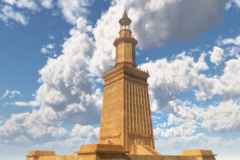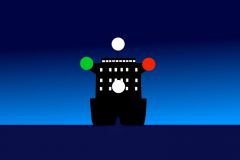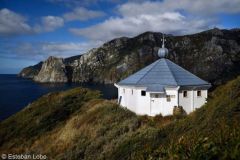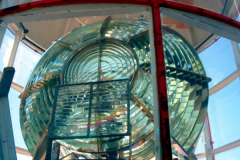Green is to starboard, red is to port . The black northeast cardinal upwards, while the clean water mark is red and white. The Lighthouse of the Great Garden lights up at sunset and goes out when the star wakes up. It must align the fire of the Bas Sablons with that of the B allue to get to the marina safely.
Legacy of the French Revolution
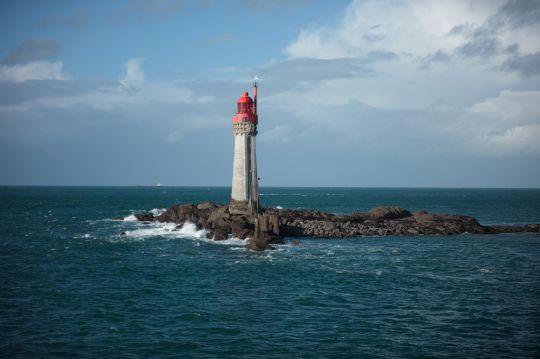
Until 1791, it would have been totally impossible in the Kingdom of France to hear such remarks. The reason? There were no services in load at the national level to manage, switch on or off, install or maintain maritime beacons. Depending on wars, alliances or misalliances, some local authorities decided, as opposed to one or other of their enemies at the time, whether or not to put in place this marking. It is therefore one of the fruits of the revolution that this possibility to have, everywhere along the coast of French waters, a reliable and quality beaconing.
Officially established in 1805, the Lighthouses and Beacons Service was created in 1791 when the Single National Maritime Signalling Service was created. In September 1792, the organization of this service became clearer. A the navy the surveillance and management of signalling facilities (lighting of lights, maintenance of signals ...) to the Ministry of the Interior for work on these facilities (repair, building ...) . The beginnings of signage as we know it today were minimal.
Augustin Fresnel, first Director of Administration
It was in 1806 that Napoleon I created the Lighthouses and Beacons Service. It connects him to the École Nationale des Ponts et Chaussées and appointed its first director, a certain Augustin Fresnel, who was nothing less than the inventor of the optical system of the lighthouses we still use at sea today. A designed to test and develop signalling systems, it was installed in 1869 on the Chaillot hill in Paris. This lighthouse will remain in place until 1992, near the Marine Museum, when it will be destroyed.
Management of Maritime Signalling Establishments
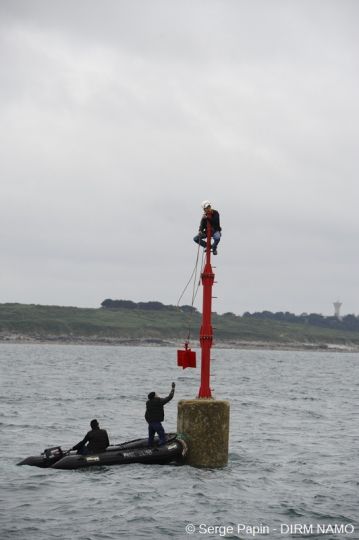
The main mission of the Lighthouses and Beacons Service is to manage the Maritime Signal Establishment (MSE) which are lighthouses, lights, buoys, turrets and espars . Their number is just over 6,100: 135 lighthouses on land and at sea (including the oldest lighthouse in the world still in operation, the Cordoba Lighthouse, erected in 1611) 1,512 fires, 3,250 active aids (Lights out) some audio equipment (equipped with bell or foghorn) other radioelectric (Morse code transmission mostly) .
The 1,200 employees of the Lighthouses and Beacons carry out 7,300 interventions per year, i.e. 20 per day, 7 days a week and 24 hours a day, whether for new construction or existing consolidation, there is no equipment on our sea facades that is not managed by this administration.
Maintaining a database of MSEs
If the IALA (International Maritime Signalling Agency, International Association of Marine Aids to Navigation and Lighthouse Authorities for Anglo-Saxons) defines the characteristics of each (color, frequency, shape ...) Each member state of this agency delegates the application of this standardisation to a national authority. It is the role of the Lighthouses and Beacons, therefore, to manufacture this equipment, with freedom of choice as to technology, material, location, type of light and to maintain, at national level, a database of all these signals, called ALADIN, hosted by the IFREMER . This database, access to which is subject to authorization, contains all the MSEs present in France, both mainland France and overseas departments.
Among its missions, the Lighthouses and Beacon a also the responsibility to participate in the working group for the international coordination of signalling standards by being an ex officio member of the IMO (International Maritime Organization) and the IALA .
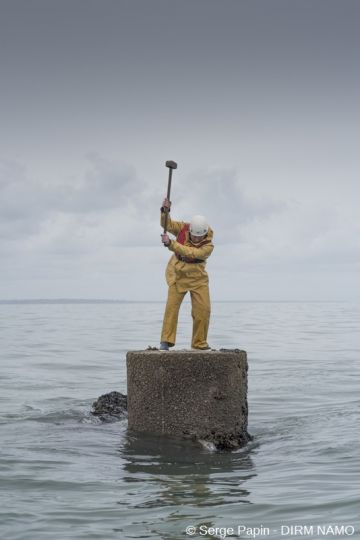
Last but not least, the Lighthouse and Beacon Administration is responsible for the management of the equipment used to trigger the maritime pollution response plan POLMAR .
One organisation per seafront
The administration of the Lighthouses and Beacons is organized by seafront, with a main location within each maritime prefecture (Le Havre, Nantes, Bordeaux and Marseille) and more local locations depending on the needs of the service. It has 36 vessels at its disposal for its action: ocean-going buoy tenders, coastal buoy tenders, workboats and launches.
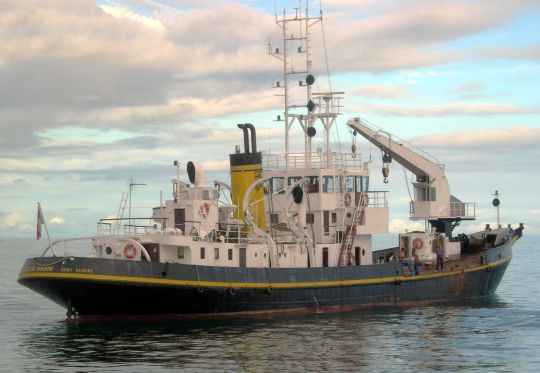
L' APB is a member of the "Centre d'Etude et d'Expertise sur les Risques, l'Environnement, la Mobilité et les Aménagements" (Centre for Study and Expertise on Risks, the Environment, Mobility and Development), where it represents the needs of sea users in the search for new solutions or strategies for beaconing or orientation, such as, for example, AIS beacons which would allow, like the ships we pass, to be formally and reliably recognised by a simple receiver of this technology.
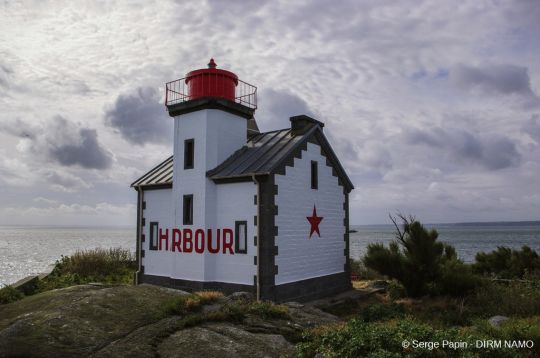
The Lighthouses and Beacons Administration manages the marking of maritime routes, the espars The information may be used to determine the location of the ship, the entry and exit of ports or hazardous areas for navigation. It's thanks, in particular, to its daily action on one of the widest sea fronts in the world that we, both pleasure boaters and professional sailors, can navigate every day of the year in safety. It is currently working on renewing its fleet, which is ageing and poorly adapted to the new needs of the Inter-Regional Maritime Directorates it serves.
A museum to visit
Finally, the Lighthouses and Beacons Administration runs the Lighthouses and Beacons Museum, located in Ouessant and installed in the former lighthouse power station. A visit to remember how marine signage is a key element of our navigation.
